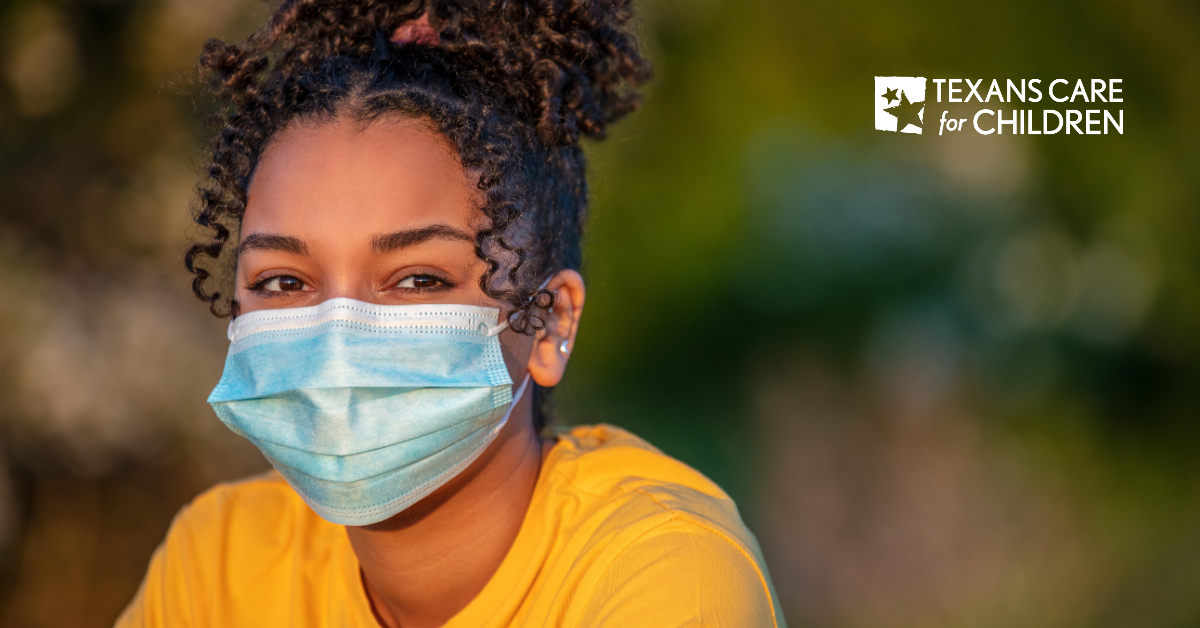Since the COVID-19 pandemic began to spread across the country, state and national leaders have reiterated the goal of putting families first. Prioritizing the needs of children and families should include efforts to ensure that more children can stay safely with their families and out of the overburdened foster care system.

Although Texas has made progress on child protection over the last three years, we still had a lot of work to do before the pandemic started — and now the pandemic has exacerbated many of those problems: more families are at risk of becoming involved with Child Protection Services (CPS), foster care placements are more limited, and young adults leaving the system are facing bigger hurdles than ever. The pandemic has underscored that the Texas Legislature must prioritize families with vulnerable or at-risk children and continue reform efforts.
The pandemic has increased the risk of families becoming involved with CPS
When families are under stress, we often see increases in risk factors for child abuse and neglect or CPS involvement. Child maltreatment risk factors include domestic violence, poverty, and untreated behavioral health challenges; several of these issues have worsened in Texas during the pandemic. For example:
- During the first few months of the pandemic, domestic violence-related murders more than doubled in Harris County;
- Texas families with tight financial resources have been under additional strain, and challenges associated with poverty like housing instability, which has been on the rise throughout the pandemic, may increase the likelihood of CPS involvement; and
- Texas mental health experts expect to see increased rates of mental illness and substance use disorders related to both the pandemic and the economic recession.
As these risk factors increase, it is less clear whether incidences of child maltreatment are also increasing, although some evidence suggests child maltreatment may be going unnoticed or worsening. With schools closed and fewer eyes on children, reports of child maltreatment have been dramatically lower, leaving child welfare experts concerned that child abuse or neglect may be going unseen and unchecked. However, even with reporting down, the number of children removed from their parents and placed in foster care has remained relatively stable, which suggests a larger percentage of reports to CPS are resulting in children entering foster care. Most children come to CPS’ attention because of neglect, but some reports also suggest sexual or physical abuse has increased or worsened during the pandemic. For example:
- Nationwide, as early as April, “for the first time ever, half the victims receiving help from the National Sexual Assault Hotline were minors;” and
- Cook Children’s Hospital in Fort Worth has reported a spike in the number of severe or deadly child abuse cases it is seeing.
As we recently noted, we are also concerned that Black children in Texas are at a higher risk of being removed from their families by CPS compared to other children in the state.
The pandemic has worsened the ongoing foster care capacity crisis.
Before the pandemic, Texas already had significant gaps in the availability of foster homes willing to serve teens generally, children with high needs, and kids in rural communities. Now, the pandemic appears to be affecting the system’s already strained capacity:
- Foster care providers in San Antonio have indicated that the pandemic put additional stress on the emergency shelter because foster care placements became harder to find. One reason may be that, due to concerns about virus exposure, CPS is having a harder time finding homes for youth who have previously run away.
- COVID-19 outbreaks in foster care may temporarily close off capacity, and youth in long-term foster care have had considerably higher positivity rates than Texas’ general population.
- Some foster care providers have shuttered due to costs associated with maintaining staffing ratios while schools have been closed because children in foster care facilities often attend public schools, so during the school year fewer staff are needed during the day.
In addition to a long-standing shortage of foster care placements, we know that Texas faces urgent, well-documented challenges that make it harder to ensure that children who do enter foster care are safe and supported. Examples of the state violating children’s rights or children experiencing physical and sexual abuse in foster care — and in the worst cases even dying in foster care — can be found in the federal lawsuit against CPS, media coverage, and more.
The pandemic has made life harder for young adults leaving foster care.
For young adults who have experienced foster care, the pandemic has also intensified challenges related to food, housing, health care, technology, finances, employment, transportation, education, household supplies, and child care. Even before coronavirus hit Texas, 18-21 year olds who experienced foster care in Texas had worse outcomes compared to children who experienced foster care in other states and their peers in Texas’ general population:
- Over half were unemployed;
- Over a quarter lacked a high school diploma or its equivalent;
- Over a quarter lacked stable housing, and
- Over a third became parents too early.
Recommendations for the Legislature to pursue during the 87th Session
Fortunately, the Legislature can address these many challenges in the following ways:
- Invest in Texas Department of Family and Protective Services (DFPS) Prevention and Early Intervention (PEI) programs that prevent child abuse and neglect;
- Provide more robust services and support to children and families through child care, health coverage, Early Childhood Intervention, and more;
- Reduce the number of children entering foster care by leveraging federal funding available under the 2018 Family First Prevention Services Act (FFPSA);
- Strategically plan to expand foster care capacity by adding specialized placements or populations to the existing foster care needs assessment;
- Improve the safety and support for children in Residential Treatment Centers (RTCs), and avoid the overuse of RTCs, by taking the following steps:
- helping facilities meet new federal FFPSA standards,
- expanding eligibility for Treatment Foster Family Care, and
- increasing court oversight of foster care facilities; and
- Help older youth and young adults in foster care plan for the transition out of foster care earlier, remove barriers to staying in extended care, and ensure they have the skills and resources they need to successfully transition to independence.
- We look forward to working with state leaders to advance our recently published legislative agenda, prevent child abuse and neglect, keep more children safely with their families, and improve our foster care system to ensure children and youth in foster care thrive.



